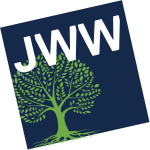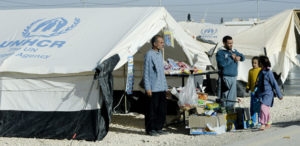*Brooke Cichosz, a 2016 Schulweis Fellow contributed to this post.
Imagine if you were forced to flee your home. What would you bring? What could you bring? Where would you go if you had never been more than 2 miles outside of your hometown your entire life? These are just some of the tough decisions facing over 65 million people who have been forcibly displaced worldwide.
Every day, 34,000 people are displaced from their homes due to conflict, violence, or natural disasters. Since one of the primary causes of displacement today is violent conflict, many displaced spend up to 20 years away from their homes due to persisting insecurity. An important distinction of displaced persons is recognizing the different circumstances of refugees versus internally displaced people (IDP). The technical status of being a “refugee” affords individuals with specific rights recognized under international law. Refugee cannot be self-ascribed, as there are strict international guidelines that provide specific qualifications. Refugees have fled conflict or persecution, crossed an international border and have no other choice but to rely on the infrastructure and support of their host community and the international community. Unfortunately, many host communities are ill-equipped to handle a large influx of refugees. Many people who flee their homes due to conflict and persecution and cross an international border may be termed “refugees” in the media and in conversation, but often many of these individuals have not been formally declared refugees, meaning they are not always afforded the rights and protections refugees should receive under international law. The term IDP, on the other hand, is merely descriptive. IDPs are displaced from their homes, but remain within their state and therefore are more likely to be trapped in conflict zones, leading to higher mortality rates, increased exposure to physical harm, severe food shortages, and limited healthcare.
To address the myriad problems refugees and IDPs face, it is first necessary to identify areas where both groups face the greatest risk: food, shelter, education and security. It is important to remember that for many displaced people, the circumstances and challenges of their displacement can vary. Whether they reside in a formal camp, host community, or as many IDPs do, in unofficial makeshift groups, each population has to adapt too unfamiliar and resource limited circumstances.
Food
Imagine trying to provide food aid in a war zone to IDP camps; often located in isolated and hard to reach areas, it is quite daunting. Damages to transportation infrastructure and lack of land or air transport for aid, are common problems for both those seeking aid and those trying to provide it. All options come with their own benefits and challenges. Land transport is common, but depending on the situation risks hijacking, and long transport times. In areas with heavy rain falls and impassable roads, land transport sometimes becomes impossible. Air transport is more costly, but provides an alternative for when land transport is not an option. Both options carry extreme risks in active combat zones where attacks on aid compounds and deliveries are all too common.
Aleppo, Syria serves as a prime example of some of the difficulties aid agencies face. In the heart of the Syrian conflict lies the besieged city of Aleppo where civilians are in desperate need of international support. This past month, yet another formal truce was attempted, between the two major sides of the conflict, in order to allow food aid to reach starving civilians in rebel-controlled areas of Aleppo. However, the UN aid convoy was bombed as it was en route to provide emergency supplies for 78,000 people. This aid is going to both displaced people and the residents of eastern Aleppo who have been facing food insecurity since the conflict broke out.
In another case, after fleeing genocide in Darfur, some 360,000 Sudanese refugees living in refugee camps in eastern Chad for over ten years, now face dramatic cuts in food rations due in large part to the increased number of displaced worldwide, with limited resources to go around. This has spurred an effort to make refugees become more ‘self-reliant’ and has agencies pushing these refugees to become more involved in their host’s society. But the logistics of this are quite difficult. Both the refugees and host community face food insecurity, limited farmable land, scarce water supplies, and minimal job opportunities. Additionally, with decreasing aid, there is nothing immediately available to make up for the cuts in rations. Unfortunately, these are not one-time occurrences. The issue of providing basic levels of food aid to those in need is a repeated problem.
[su_column size=”2/3″ center=”yes” class=””]
[su_youtube url=”https://www.youtube.com/watch?v=vha2Tb6oGKE” width=”400″ height=”300″][su_youtube url=”https://www.youtube.com/embed/wSU6v-PNd74″ width=”400″ height=”300″] [/su_youtube]
Another example of food insecurity due to displacement, the WFP provides aid to 80,000 South Sudanese refugees who arrived in northern Uganda after renewed conflict in South Sudan.
[/su_column]
[su_column size=”1/3″ center=”no” class=””]
[/su_column]
Shelter
While refugee camps provide temporary accommodation, many are poorly protected and lack the sustainable infrastructure needed to secure increasing population sizes and the increasing problem of long-term displacement. There are many types of shelters for displaced people, however, not everyone has access to ideal camps and the protection of being classified as a refugee. Many IDPs are forced to relocate from their camps, which are usually unofficial in the first place, as the violence from which they escaped follows them. Issues of dependency on food aid are heightened when camps are constructed in isolated and hard to reach areas, offer limited opportunities for the refugees or IDPs to find work or food on their own. Many people fleeing their homes due to conflict in underdeveloped countries often end up in other underdeveloped countries facing their own poverty and insecurity issues.
Formal refugee camps are also not always available. For example, in Lebanon, over 1 million Syrian refugees have sought refuge in 1,700 communities and locations across the country. Overcrowded and small, these lodgings offer limited security and do not have the benefit of supporting a sustainable community. Due to the proximity of many of these lodgings to the escalating violence in the conflict, many refugees face fewer available long lasting options, resulting in many self-settled and spontaneous camps, many of which house the most vulnerable IDPs.

UN Photo/Mark Garten – View from Above of the Zaarti refugee camp in Jordan
Education
The United Nations High Commissioner for Refugees (UNHCR) notes that of the 6 million primary and secondary school-aged refugee children under its mandate, only 3.7 million have access to school. The burden of school-aged children on existing public systems can overwhelm existing infrastructure as was the case at the end of 2013 in Lebanon. The number of Syrian refugee children outnumbered the number of Lebanese children enrolled in the public system. Education is important because it provides life skills training and psychosocial support. The Universal Declaration of Human Rights and other UN initiatives supports the right to an education in emergency situations, and has worked to provide Syrian refugee children access to education drop-in centers in places such as Za’atari camp in Jordan. These drop-in centers provide a flexible schedule for children to drop in and learn skills in literacy and numeracy. For IDP’s these opportunities are less common. Za’atari camp is also different in the fact that it is moving towards becoming a permanent settlement, providing benefits of shelter not available to the majority of displaced people. Lastly, bullying and verbal abuse by host communities against refugees within school systems can also deter enrollment when formal education is available.
Security
Women and children represent the most vulnerable population of displaced persons. Unfortunately, women and children also make up the majority of IDPs and refugees. The lack of the safety in both formal and informal refugee camps make women and children easy targets for perpetrators of violence. They may become the victims of “sexual violence, exploitation, forced recruitment or transactional sex”. For example, in Syria, less than 7% of camps and collective centers have any form of humanitarian management to be held accountable for providing aid or security. These increased security risks imposed on displaced people has led to an increase in dangerous risk taking that in other circumstances would not be attempted. Every year, thousands of people (some of whom are not fleeing conflict or persecution, but are seeking better opportunities) from Africa and the Middle East attempt to flee to Europe in hopes of finding a safer environment for themselves and their families. Unfortunately, the journey is not always easy. According to UNHCR, between June and September 2014, at least 2,200 lives were lost making the journey. Refugees are crossing the Mediterranean in rubber dinghies and dilapidated boats, a risky endeavor left as one of the few options for refugees who either cannot or choose not to return home.
.png)
UNHCR
The number of refugees fleeing has increased over the past two years, with little signs of slowing down. This video shows migrants being rescued by the Swedish coastguard rescued off of the coast of Libya, of which 50 bodies were found dead.
But all is not lost. Challenges have been identified, and solutions exist. Other problems include limited funding and inflexibility when translating projects on paper to on-the-ground implementation. We must be prepared to adapt to infrastructure instability and have the ability to put down roots of programs that are viable under the ever changing conditions caused by the conflict. If you were forced to leave your home tomorrow, what would you bring? Where would you go?


